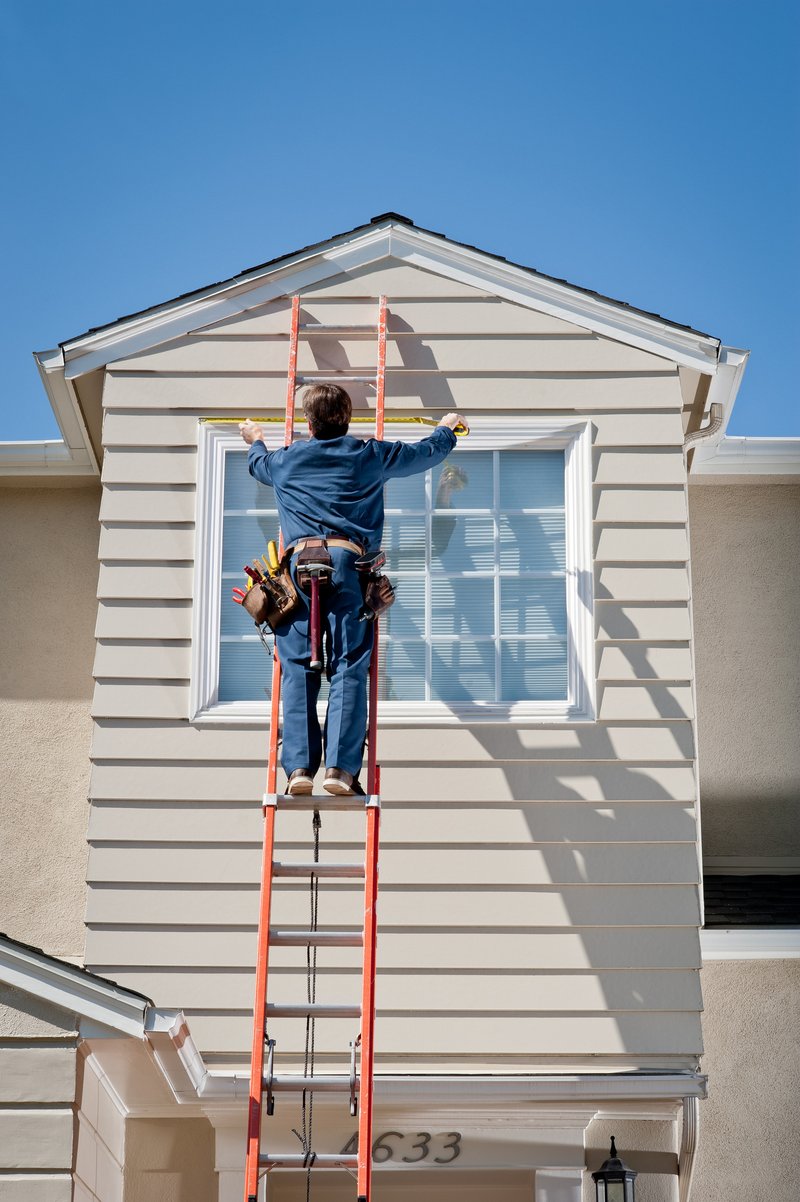
How to Measure Windows for Replacement
When considering replacing one or more windows in your home, measuring the window first is a critical step. Having the correct measurements ensures the new window fits well, not only for aesthetic purposes but also to optimize energy efficiency.
Even slight measurement errors could leave you with new windows that are too big or too small, costing you both time and money in the long run. As technology evolves, getting new windows Ottawa doesn't require inviting sales reps into your home to take the measurements - you can set up a virtual meeting to discuss your options and get a quote.
To obtain a realistic quote, you need to make sure you have the proper measurements. With the right tools, this process is quite simple. Read on to learn what tools you need and how to measure for new windows step by step.
Step 1 - Window Measurement Tools
When measuring windows for replacement, you'll need a few essential tools. You may already have them in your garage; if not, they are readily available at most local tool shops or convenience stores.
You will need:
- A measuring tape
- A level
- A pencil
- Notebook or measurement form
Having the right tools is essential, but they will only work if you record the exact measurements. Once done with one window, confirm the dimensions before moving to the next one.
Step 2 - Measuring Window Height
To measure the window height, start from the top of the window or the surface of the head to the window sill's highest point. Ensuring both ends is essential, especially when dealing with vinyl windows or old frames - it makes sure that the new window will fit perfectly into the frame.
Window frames tend to warp over time, and some may not be straight. A level will help you determine the original highest point of the head and sill. If the frame is new, it should be level, but there's no harm in confirming.
It's important to note that a window sill and window stool are two different things (the stool is the interior moulding, located at the bottom of the window to give it a finished look).
Take three height measurements: at the right edge, the centre, and the left edge. Note down the smallest measurement and deduct 1/2 of an inch to get the correct window height. The reason behind this deducting is to get a slightly smaller measurement so that the installer doesn't have to force the new window in. It prevents damaging the frame or affecting the window movement. The extra room also makes it easier to use shims when adjusting the new window and leaves space for insulation
If your windowsill is not straight, it's best to measure starting from the highest point. For accuracy, sketch the window and indicate the height on the side.
If you have a double-hung window, the sill is the board that holds the sash when you close the window. Most sills have a slant or slope to direct water away from the window. In such cases, measure the highest point of the hill.
Step 3 - Measuring Window Width
When measuring the width, start from the surface of one side jamb of the frame and work your way to the other. The side jamb is the piece of trim vertically placed on each side of the window. If you have a drywall finish, measure from one side of the drywall to the other.
Take measurements from three points as you did for the height and note the smallest number. Deduct 1/4 of an inch to get the correct width and record it at the top or bottom of the sketch.
If you have old window frames, it's best to lift the window sash to get accurate measurements. Remember to measure beginning from the structure's surface or jamb, not the short extensions that support the window.
Some windows have plastic liners surrounding them or aluminum jamb liners on the vertical sides. These liners must be removed before new window installation. In such cases, measure their width and add the number to the actual width. If you can't reach the liners, you can approximate the width to ½ inch (1.25 cm). Don't forget to account for the measuring tape's width, which should be on the label.
If you measure three points and get three different measurements for very tall windows, such as Ottawa windows, note down all three. It could be because the opening was not well cut and is therefore not parallel.
Step 4 - Measuring Window Depth
Most people find measuring the window depth to be challenging, and rightly so. Depth is the most crucial aspect, as it ensures that the new window connects well with the frame. Getting the measurements wrong could result in the new window sticking out or sinking in, which can cause critical issues.
To get the correct depth, start by measuring the entire window opening. That is, from the inside to the outside. Although you don't have to measure at three points, avoid measuring the shortest point.
If you're unable to open the window, you can measure the depth on both sides and add them together. You can also make a rough estimate by measuring the interior side, then multiplying the number by two.
Once you get the depth using either method, add the thickness of the glass pane itself. If you're not sure, the average thickness of most glass panes is 1/8 of an inch (0.3 cm).
Some specific windows and storm windows have a minimum depth. You don't need to have an exact measurement if your record depth exceeds the minimum depth requirement.
Ensure you double-check the measurements, then note down the number on your sketch. Remember that the depth between the interior window trim and the exterior stop strip should be about three ¼ inches.
Step 5 - Include the Quantity and Room
When measuring multiple windows with different sizes, ensure that you measure every frame. Have a sketch for every window, and note accurate measurements on each. Distinguish the windows using labels to avoid getting the wrong sizes.
Also, note any irregular windows or custom sizes for an easy time placing your order.
What is the Standard Window Size?

There are no specific standard dimensions for replacement window sizes, but you'll find some standard window sizes for separate windows. Once you know your window measurements, you can search for manufacturers with the appropriate size you need.
If a window is smaller than the window opening, it's possible to alter it for a perfect fit. If it's too large, fitting it into the space without reconstructing the wall will be difficult. That usually happens to commercial buildings such as warehouses, dental offices, convenience stores, dentistries, gyms, fitness studios, tattoo parlours and etc.
Common Types of Windows
Double Hung Windows
Double-hung windows are the most common type of window. They are popular due to their increased ventilation and allowance for better airflow. They also have tilting sashes that make cleaning high windows easy.
Picture Window
Picture windows are suitable for areas where you'd like extra light without focusing on ventilation. Besides their free, clear views, picture windows are easy to maintain. They are also available in various specialty shapes to suit most house designs.
Awning Windows
Awning windows have a fixed top edge and are open from the bottom. You'll find them mostly on windows close to the ground. They are great for ventilation in rainy seasons since the slanting glass diverts water away from the inside.
Sliding Windows
Sliding windows often have two to three panels, with one or two moving panes. Since they are in a horizontal position, they are perfect for scenic views.
Additional Tips When Measuring Windows for Replacement
- For more accuracy, you can convert the measurements to millimetres instead of using inches. It eliminates some errors when the manufacturer converts them into inches.
- Take the measurements of the height and width from outside as well. If you have a removable window sill, start measuring under it. For renders, remove a small piece and measure from the actual edge.
- Avoid measuring old window frames, as warping can give you inaccurate figures.
- Always double-check how you record the measurements. If you get them wrong, the manufacturer is not responsible, so you'll still pay the total price. When in doubt, it's best to consult a windows replacement company.
As you measure replacement windows, ensure you record three points for the height and width. Measure the depth on all four sides of the window and use the smallest measurement.
In some cases, your local manufacturer or home improvement store may not have your specific window size in stock. This could mean waiting for a couple of weeks to the perfect fit. When planning the project, be sure to factor in this waiting period.
If you'd like to spruce up your home, you don't have to replace the old windows with similar ones. You can always choose a different style for new windows. For instance, if you'd like to enjoy the view, you can switch to picture windows. For more ventilation, you can go for double-hung windows.
Most importantly, you can opt for energy-efficient glass to reduce your energy bill. Wondering where to start? Get a free in-home quote from the best windows and doors company in Ottawa.






